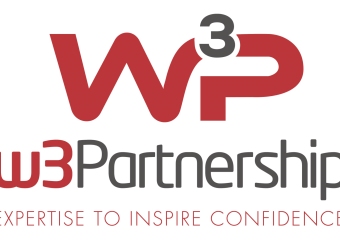TO SERVE OR NOT TO SERVE – That is the Question. API’s HOLD THE KEY
Graham Clark – W3Partnership August, 2016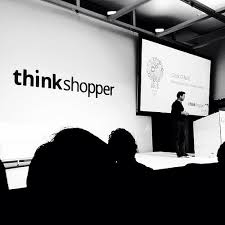
Introduction
Thee sayeth, using API’s, one can collecteth information from thine customers buying habits and then provideth thy folk such seamless shopping experience? Queen Gertrude wouldst beest in her elements, as one to embrace new technology; thee bid me yond that can be done in 2 weeks. “Claudius is joyous sir”
Meanwhile, Hamlet upon his desk, pen in handeth, Ophelia enters the cubiculo and announces the lady’s hath heard yond Claudius, from digital experience department, sayeth that gent needeth us to support thine new system, as Queen Gertude hast wage to spendeth and loves a new technology Claudius is proposed.
It’s BI-Modal
How would Shakespeare have approached the 21st Century and taken account of what is going on within the retail world today?
Retail and consumer goods companies are building deeper and richer relationship with their customers than ever before. To make more informed merchandising decisions, deliver superior service and drive deeper engagement, companies must ensure an anytime, anywhere relationship with customers, partners and suppliers.
In our data loaded times; we can combine and use data sources in ways that even 5 years ago would have taken years to develop and get useful interpretations from. Every day it seems a new company arises with a capitalisation of billions of pounds (dollars, euros, yen), based solely on the way that they use data sources. Those data sources are exposed by APIs. If you don’t know what an API is yet, look it up. They are everywhere.
Alongside this trend, has arisen “The Cloud”; the ability of pretty much anyone to gain access to a solution by having three things; an internet connection, laptop/mobile and a credit card. As a result this has raised expectations from the business that a technical fix to a problem is only a click away. The guys in the buying department can do some analysis, read some reviews, talk to some friends and, hey presto, implement a solution. They can even integrate their solution with their partners existing systems, the supplier has just the right connectors needed to carry out the integration. No problem!
Hold on! The I.T. experts intervene. What about security? What about governance? The 30-year-old mainframe holds vital customer/partner information; there are 3 different versions of the CRM system throughout the organisation.
The buyers and business teams ask; why do IT keep putting these obstacles in our way? Well – because it matters!
As retail organisations seek to improve their omnichannel presence, this increases the pressure on I.T. departments to move as rapidly as change demands. In balance of this, is the need to protect the brands reputation and ensure that there is proper governance over the usage of data and the solutions and partners that access them; which is the domain of I.T. This leads to a “Bimodal” approach to I.T, something to appease both Claudius and Hamlet, and enable retail organisations to move rapidly to keep up with customers and suppliers’ expectations, whilst ensuring that both security and governance are not at all compromised.
So How Does I.T. Help Meet This Demand?
Traditional I.T has typically worked on a supply and demand model. Where the business provides a demand for new I.T services and I.T provides the supply of skills, expertise, knowledge and know-how to meet that demand. Unfortunately, with the growth in new data sources via the internet of things, video and partner information, and an expectation of omnichannel delivery, demand is going through the roof. However, the supply of I.T capability is fairly static.
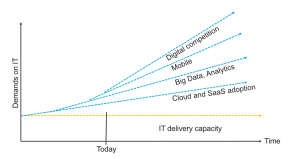
Figure 1 Demand on I.T Departments today
To address this, Gartner has defined “pervasive integration” as the act of; integrating on premise and in-the-cloud applications and data sources, business partners, clients, mobile apps, social networks and “things” as needed to enable organisations to pursue digital business, bimodal I.T and other modern business and technology strategies. The proliferation and growing importance of decentralised integration tasks — driven by these business and I.T trends — are forcing directors of integration to rethink their approaches, organisational models and technology platforms. (Massimo Pezzini, 2016, March)
MuleSoft, a leading company in API integration writes; “It’s in a retail business’ best interest to develop an omnichannel strategy; customers who engage in multiple channels spend up to 30% more than single channel customers and tend to be powerful advocates for the business. Building these strategies is a process that businesses embark upon, and a process that can be made easier through connectivity”. (Mulesoft 2016)
So how does I.T meet this demand gap?
IT departments need to change their mode of behaviour. They move from being a Centre of Expertise, where everyone is looking to them to supply IT solutions and towards becoming a Centre of Enablement, where they supply the reusable assets, patterns and API’s to deliver the solution, thus no longer an inhibitor of change.
For example, when a department wants to purchase a new IT service or solution, they go to a searchable internal repository to discover a solution or service. An enabler, so when a do-it-yourself developer decides to develop a solution, I.T. guide’s them with the tools, assets and services to help them build that service. When someone in the organisation says, “a potential new supplier has the latest and greatest new tool”, I.T. says, “No Problem”, bring it into the organisation.
The notion of a Centre for Enablement (C4E), is taking hold within Retail and commercial enterprises. I.T should be the owner and promoter of assets such as reusable templates, patterns, micro services and APIs.
The I.T department’s job is to promote within an organisation a culture of reuse and ensure that people both within the business areas and external partners are aware of what is already in existence, what is available from third parties, what probably still needs to be built and offer technical expertise where required. This cultural change fosters an air of cooperation between business leaders and I.T, ensuring that I.T is seen as an enabler of change, not a traffic jam that needs to be avoided.
One of the best examples of this comes from Unilever, one of the world’s biggest owners of commercial brands. Their Global Director of Enterprise Business integration described at the 2016 London Mulesoft Summit, the cultural changes that were required within any organisation, big or small to help foster such a change. (Brandes, 2016)
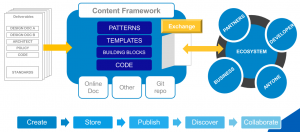
Figure 2 Centre for enablement assets.
W3Partnership provide patterns and assets to help clients develop their own Centre for Enablement. These Common Integration Assets (CIA) have a proven record with clients such as Office Depot and Pets at Home to bringing about cultural change, to accelerate the delivery of new services to the business.
We talked earlier in this paper about APIs – Application Programming Interfaces. For the uninitiated these are new ways at getting access to the proliferation of data sources. They allow access to customer/partner information e.g. buying habits, preferred method of purchase, stores most visited, or more simply, the information from your latest Software as a Service (SaaS) acquisition to your existing in-house applications. API’s allow the business to decide how to amalgamate these sources to provide useful information.
A working example
Expanding Online Presence to Meet Customer Needs
A top 4 UK food retailer knew that it needed to grow amongst fierce competition, and knew the fastest area of growth in food retail was online. A middleware manager at this retailer said, “[To] continue to grow our business we needed to expand to new channels on the web while also reinvesting in our core in-store business.” After acquiring an online baby retailer, the company now had a strong online channel, and wanted to migrate its existing customers over to the higher margin baby market, and also wanted to integrate its new customers into the brand experience at existing grocery stores. To make this happen, their retailer needed to establish a single view of the customer, but all the customer and product data was stored in multiple databases, an IBM Unica marketing automation platform, and an Avaya call center platform. The retailer decided to consolidate a single view of the customer in Salesforce, but also needed a real-time integration platform because, said the middleware manager, “we had multiple endpoints handling a high volume of transactions requiring real-time synchronization.” They also wanted their integration platform to be cloud-based so it could be deployed quickly and easily.
With MuleSoft’s Anypoint Platform, the company achieved a single view of the customer in Salesforce in just 2 weeks. With no hardware or software to deploy and no firewall policy changes or proxy servers required, integrations were fast to configure. The company can now begin multi-channel marketing, an initiative that is expected to be a key driver of growth and competitive advantage in the future. For this client the Anypoint Platform supports real-time synchronization of 5 million customer records and hundreds of thousands of SKUs. As the business grows, the company is confident that the Anypoint platform will scale to support even larger volumes.
Develop, Discover, Measure, Secure
APIs need to be managed, source versioning and security need to be controlled.
If you want to meet the demands of your organisation, you will want to make sure that duplication of effort is avoided by being able to search available APIs.
You might even want to develop, your own APIs or micro services. Better still, you might want to discover who else has already built a great API or micro service for the functionality you require.
Mulesoft’s Anypoint platform provides a rich, but highly focused API development and management platform that is able to handle each of the elements of these requirements in a seamless manner, using a common set of tooling.
MuleSoft’s Anypoint Platform allows enterprises to deliver on their digital transformation with API-led connectivity for service orchestration, application integration and APIs on a single platform.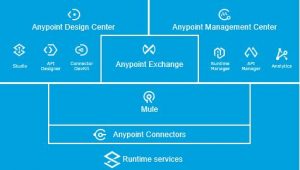
Figure 3 Mulesoft Anypoint platform
In Conclusion
There are conflicting dynamics within any organisation, which have vital roles to play in order to deliver the changes required in a safe and sustainable way. However, these opposing dynamics need a combination of technology and cultural change to sustain the rate of growth demanded by both the organisation and customer. The needs of retail/consumer goods organisations will not be met by doing what they’ve always done; a cultural and behavioral shift is required – to self-service and enablement, to help bridge the capacity gap.
W3Partnership and Mulesoft have the proven tools and assets to help build and sustain these changes. We have demonstrated great depth of technical delivery and know-how to our customers. Whether you are Claudius and Hamlet, Trump and Clinton or Hennes and Mauritz come and talk to us today for support in your retail organisations digital drive.
Who are we?
About W3Partnership
W3Partnership provides technology, skills and assets that help organisations large or small effectively share their applications & data both within the enterprise and externally. We provide expert services associated with delivering integration projects. We specializing in assisting customers build a secure, robust Integration platform for their internal or mobile requirements. We are specialist in both open source and commercially available products having worked with leading integration platforms for Digital Delivery, such as the MuleSoft’s, Anypoint Platform.
About MuleSoft
MuleSoft makes it easy to connect the world’s applications, data, and devices. With our market-leading Anypoint Platform™, companies are building application networks to fundamentally change the pace of innovation. MuleSoft’s API-led approach to connectivity gives organisations new ways to reach their customers, employees, and partners. Organisations in more than 60 countries, from emerging companies to the largest Government departments to Global 500 corporations, use MuleSoft to transform their businesses.
Works Cited
Brandes, F. (2016). Driving Integration Speed and agility at Unilever. Mulesoft Conference, London. London.
Kroenke, D., & Auer, D. (2009). Database Concepts. New Jersey: Prentice Hall.
Malinverno, P. (2016). Magic Quadrant for Application Services Governance ID:G00270248. Gartner.
Massimo Pezzini, J. T. (2016, March). How to Implement a Hybrid Integration Platform to Tackle Pervasive Integration. Gartner ID:G00300867.
Michele Bonardi, M. B. (2016). Fostering Collaboration Through API Economy: The E015 Digital Ecosystem. CEFRIEL – Politecnico di Milano. Milan: 3rd International workshop on Engineering Research and Industrial Practises.
Shakespeare, W. (1600/1601). Hamlet.
Stair, R., & Reynolds, G. (2001). Principles of Information Systems. Boston: Course Technology.
Thomas, M. (2016). Lies dam lies and statistics. Reading: W3Partnership.




